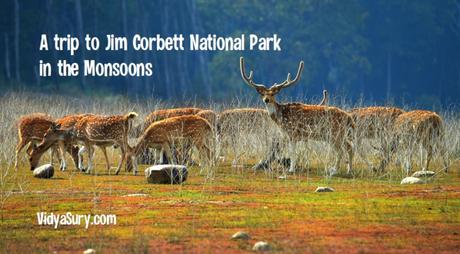
Come monsoon, I see most people heading to the beaches or taking a drive through the hills. But have you ever seen the beauty of the jungle in the rains? I am talking about Jim Corbett National Park. Imagine the endless expanse of tall trees wrapped in a fresh coat of moss and wild vines; it's no less than a scene out of a fairy tale.
Bent upon turning this imagination into reality last year, some friends and I planned to spend a weekend at Jim Corbett. However, we realized there was some research to do. What if it was closed during the rains? We had heard that it was closed during certain times of the year.
Located in Uttarakhand, Northern India, Jim Corbett National Park is a forested wildlife sanctuary rich in flora and fauna. It is popular for its Bengal tigers. Wild animals roam free in the forests and on the banks of the Ramganga Reservoir, one can see elephants and leopards and innumerable species of birds.
Contrary to popular belief, we were delighted to learn that Jim Corbett National Park is not completely closed during the monsoon. While some zones of the forests might be inaccessible, a few of them do remain open for tourists.
Most wildlife lovers would save their trip to this national park for the period between October and May. But monsoon is the time when one can truly reconnect with nature in its full glory and the rawest possible environment.
To make sure our journey was comfortable and more important, safe, we got a Tempo Traveler on rent in Gurgaon.
After a six-hour drive, we reached the hills and low valleys of Jim Corbett National Park. Of all its popular tour zones, only Jhirna and Sitabani zones were accessible in the rains. We had booked our stay with one of the retreats in the Jhirna zone.
I have been to Jim Corbett more than once, each time exploring a different part of the forests, but never in the rains. It was a whole new world out there in the monsoon. It was as if the jungle had grown a new cover with new trees and fresh undergrowth.
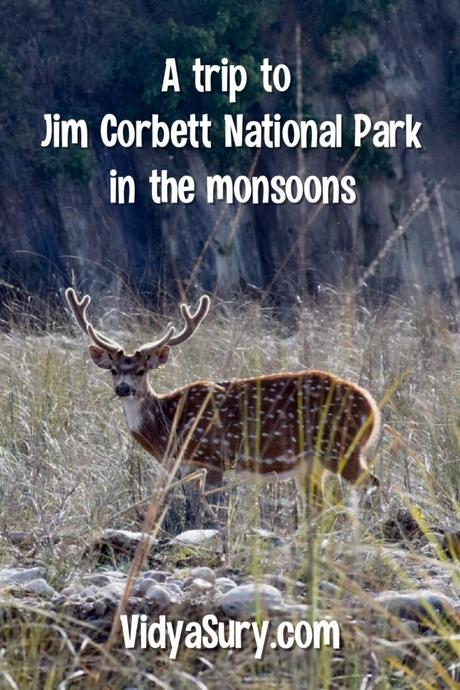
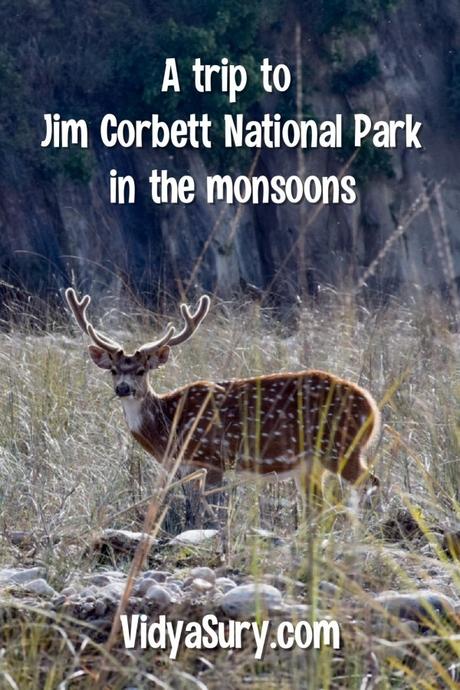
A monsoon safari
After parking our car at the retreat, we headed out for a walk down the wet mossy trails. The tourist information office was still open. We found that we could take their regular Jeep Safari and booked it right away. It was mandatory to be accompanied by a guide according to the park rules since most of the forests were closed, and we were grateful we had one with us. We did not fancy being lost in the jungle, as romantic as it sounded!
Always a delight to see the peacock - this one is dancing like nobody's watching!
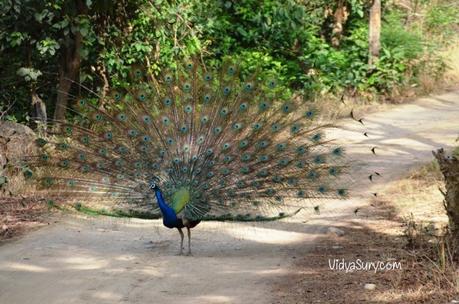
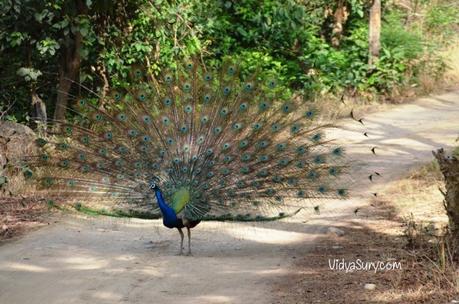
Soon, we started our tour through the muddy roads and misty forests. As we went farther into the deeper sections of the forest, it became greener and mysteriously darker, with sunlight hardly filtering into the jungle.
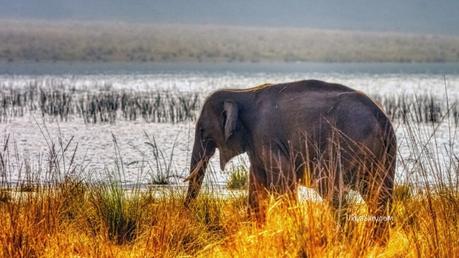
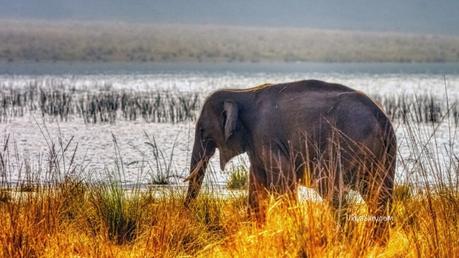
The rains had brought out every life form in the forest. Herbivores like deer, boars, and antelopes were roaming freely enjoying the abundance of plants to feed on. But if they were out, their predators were not far behind, naturally! And we found out quickly enough.
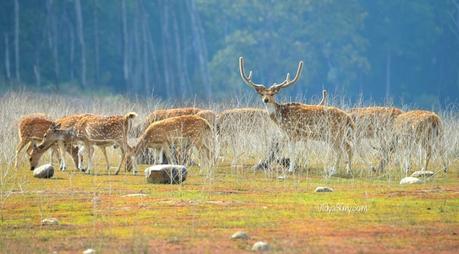
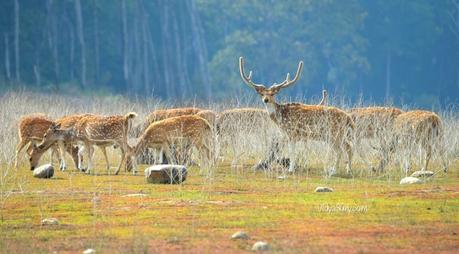
As our Jeep followed a herd of deer, they suddenly picked up speed and simultaneously, we heard a shrill cry on the other side. In the distance, camouflaged behind the bushes, we spotted the tail of a tiger and a beheaded boar. Gruesome!
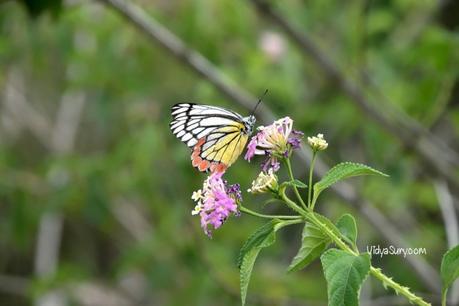
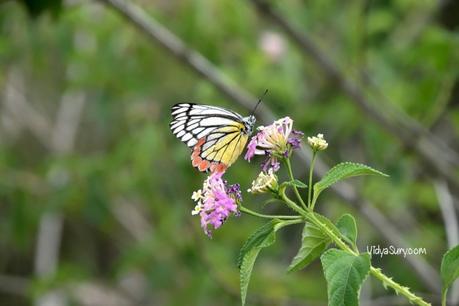
It wasn't just the animals for whom the season brought a lot of hope; Jim Corbett National Park has it's lion's share of a huge variety of birds.
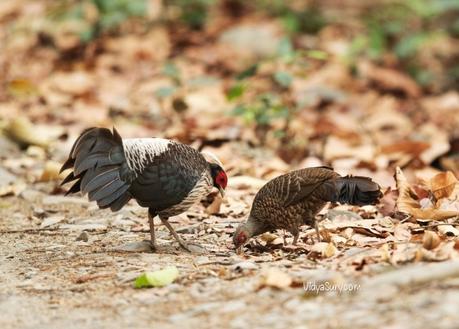

The rains meant that insects were breeding like crazy and this was a feast for the pheasants, owls, parakeets, quails, and partridges to feed on. And as they relished their monsoon menu, it was a treat to watch them-on the ground, around the ponds, and even mid-flight.
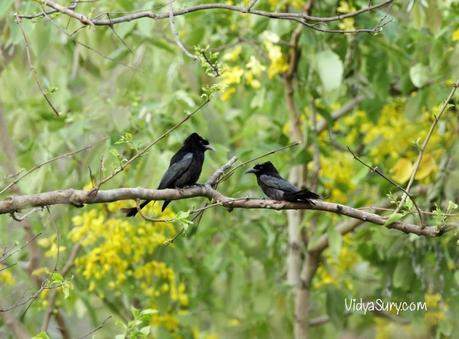
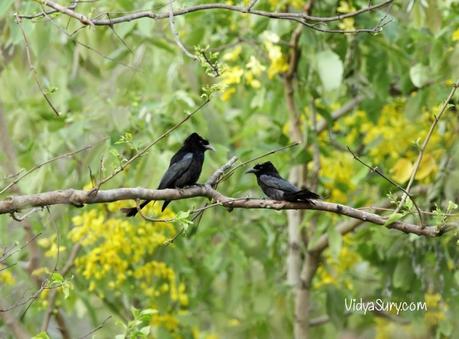
Later in the day, as we checked into the forest lodge, exhausted, it started raining heavily. And somehow, the sound of the downpour combined with the rustic ambiance brought out an enchanting vibe to the forests, enhanced by the hot tea and snacks we enjoyed indoors.
Caressed by the silence and the hoots of the owls, we retired for the day, excited about the anticipation of another day of unforgettable adventures.
My favorite reasons to visit Jim Corbett in the monsoon:
- The luxurious tranquility - The greatest benefit of visiting Jim Corbett National Park in the monsoons is that it is "off season" and so, there are hardly any tourists crowding the place, letting you enjoy an undisturbed sojourn with nature. The tranquility, fresh air, silence, and solitude, are some of the privileges that one can only experience in the monsoon.
- Exclusive adventures - While the dry season might be good for hiking or a long safari, it is the wet season when you can enjoy water sports like rafting on the Kosi River, which is usually dried up in the summers.
- Easy animal sighting - With an abundance of food for all life forms and the water bodies across the forests all full to the brim, animals come out of hiding. They swim, roam around and are at their playful best, making it a perfect time to spot them in action. And these animals also attract predators like big cats out in the open for a quick meal. These encounters are common in the rain, in the wetlands, or even inside the ponds or lakes.
Travel Tips:
- If you are traveling solo or a small group, you can easily book a cab from Gurgaon to Jim Corbett National Park and make it an exciting journey.
- Remember to check online for specific zones that are open during the rains. It can depend on the rainfall of the year.
- Carry mosquito repellent and water.
- Dress in comfortable clothing.
- Pack sturdy footwear that does not slip.
- Pack raincoats, of course.
- Check for any permits you might need at the park.
- Don't forget your camera.

